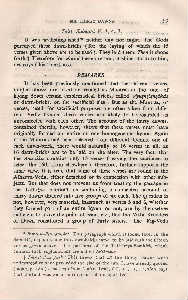Page 314 - Lokmanya Tilak Samagra (khand 2)
P. 314
THE Tlfl&TY' DAWNS "99
Taitt. Samhita v, 3, 4; 7.
It was un-distinguished,. neither day nor ·night. The Gods
'perceived these dawn-bricks (for the laying of which the 15
verses given a~ove are to be used ). They laid • them. Then it shone
forth.t Therefore for whom these are laid, it shines forth to him,
destroys ( his ) darkness.
REMARKS
It has been previously mentioned that the fifteen verses,
quoted above, are used or recited as Mantras at the time of
laying down· certain emblematical bricks, called V~h~£~h~akas
or dawn-bricks, on the sacrificial altar. But as the Mantras, or
verses, used for sacrificial purposes are often taken from diffe-
rent Vedic h:Ymns, these verses are likely to be regarded as
unconnected with each other. The account of the thirty dawns,
contained therein, however, shews tbat these verses must have
originally formed an entire or one homogeneous hymn. Agairi
if the Mantras had been selected from different hymns, one of
each dawn-brick, there would naturally be 16 verses in all, as
16 dawn-bricks are to be laid on the alter. The very fact, that
the Anuvaka contains only 15 verses (leaving the sacrificer; to
select the i6th from elsewhere), therefore, further supports the
same view. It is true that some of these verses are found in the
Atharva-Veda,: either detached or in connection with other sub-
jects. But that does not prevent us from treating the passage in
the Taittriya Sanihita, as containing a connected account of
thirty dawns divided into five groups of six each. The question is
not, however, very material, inasmuch as verses 5 and 6, whether
they formed part of an entire hymn or not, are by themselves
sufficient to prove the point at issue, viz., that the Vedic Goddess
of Dawn constituted a group of thirty sisters. The ~ig-Veda
• It was undistinguished: This paragraph which is found later in the
Samhitli, explains how the dawn-bricks came to be laid with the fifteen
verses given above. The portions of the Taittiriya SamhWI, which
contain such explanations are called Brahmana.
t Then it shone forth: This shews that all the thirty Dawns were
understood to have preceded the rise of the sun. I have already quoted
(supra, p. 189) a passage from Taitt. Brah. (II, s, 6, 5,) which says
Lhat these dawns were continuous and unseparated.

